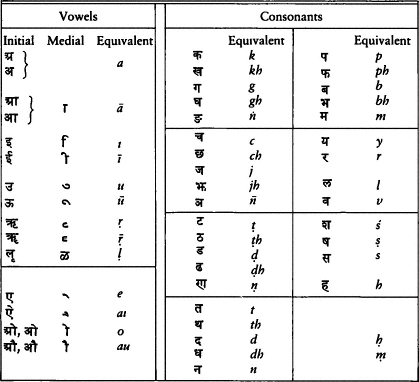Appendix One
Transliterations Used in the Text

Translation of Sanskrit and Nepali
Transliteration of Bhaktapur Newari
The transliteration of the Bhakatpur dialect of the Newari language is based on the local scribal conventions for recording that dialect in Devanagari script. These conventions are not entirely consistent, and we have made some arbitrary choices. Where possible, Newari phonemes are represented m scribal Devanagari by their approximate Sanskrit equivalents. Spoken Newari lacks the retroflexed consonants of Nepali, , th[*] , , dh[*] , and , and the Sanskrit spirants represented as and . The written language sometimes, but not invariably, keeps these written--but not so pronounced--forms in some words of Sanskritic or North Indian origin. Many of them will be found in the lists of thar names. Newari has a short high phonemic midvowel [a ], a long high midvowel [a :], a short low frontal vowel [], and a long low frontal vowel [: ]. Our transcriptions, using the macron to indicate position and the colon (representing the Devanagari visarga ) for length, follow scribal conventions. For other vowels where it is thought necessary to indicate long vowels scribes use, sometimes erratically, the Sanskrit convention, which we have rendered (as is done for Sanskrit and Nepali) by the macron. Scribes hesitate between the written alternatives ay' (the apostrophe indicating that the consonant y is not followed, as the Sanskrit transcription would otherwise suggest, by a short a) and e ; and between ay' and ae . We have followed the second usage m each case. To avoid having to place two diacritical marks over vowels that are both long and nasalized, we use (n ) following a vowel to show nasalization of that vowel. Bhaktapur has a dorsovelar nasal that is not present in Kathmandu Newari which we represent by ñ . We follow the convention of transcribing the Devanagari , used in Newari for the bilabial glide [w ], as w . (See K. P. Malla [1985] for Kathmandu Newari.)